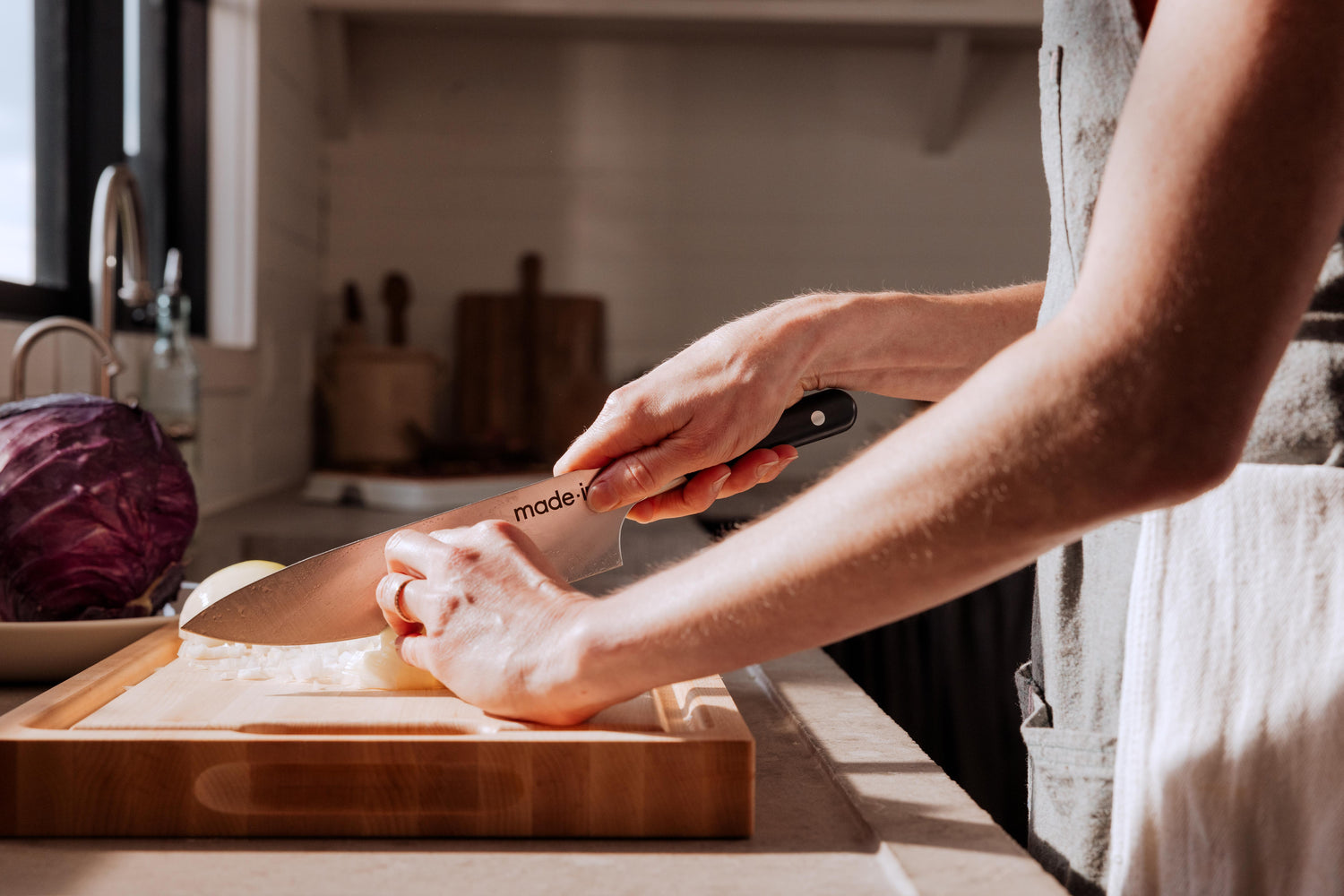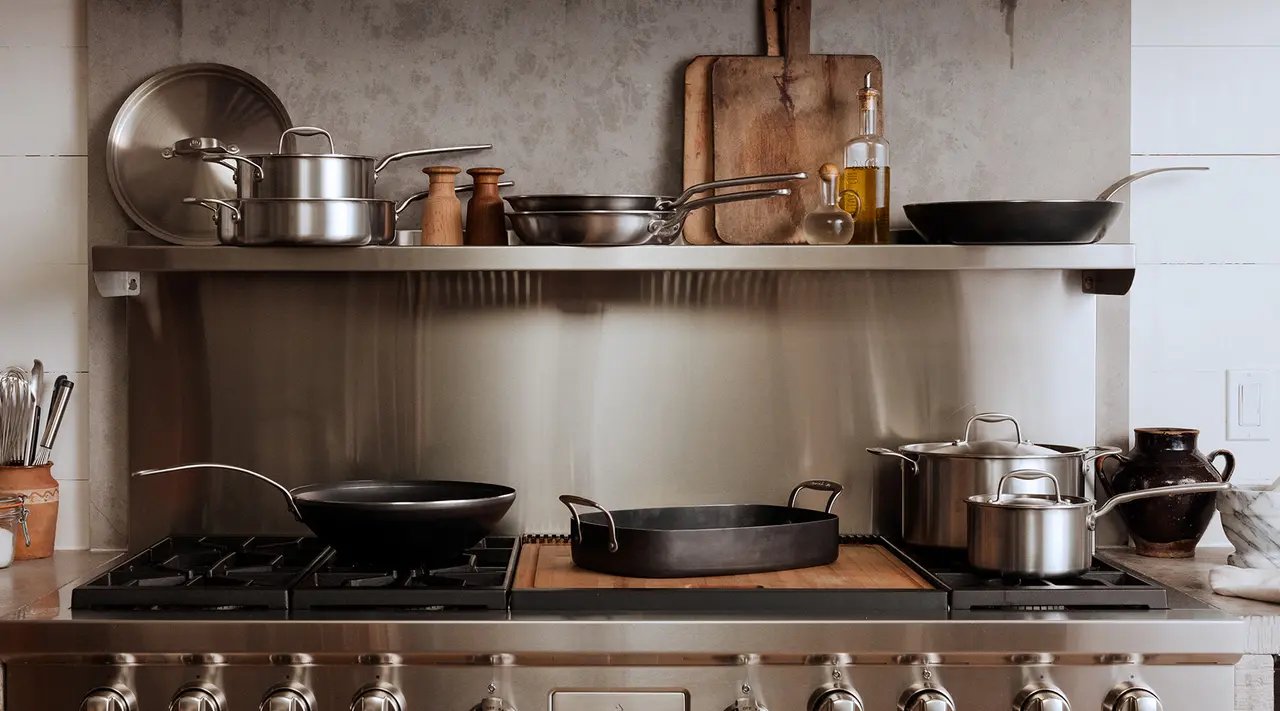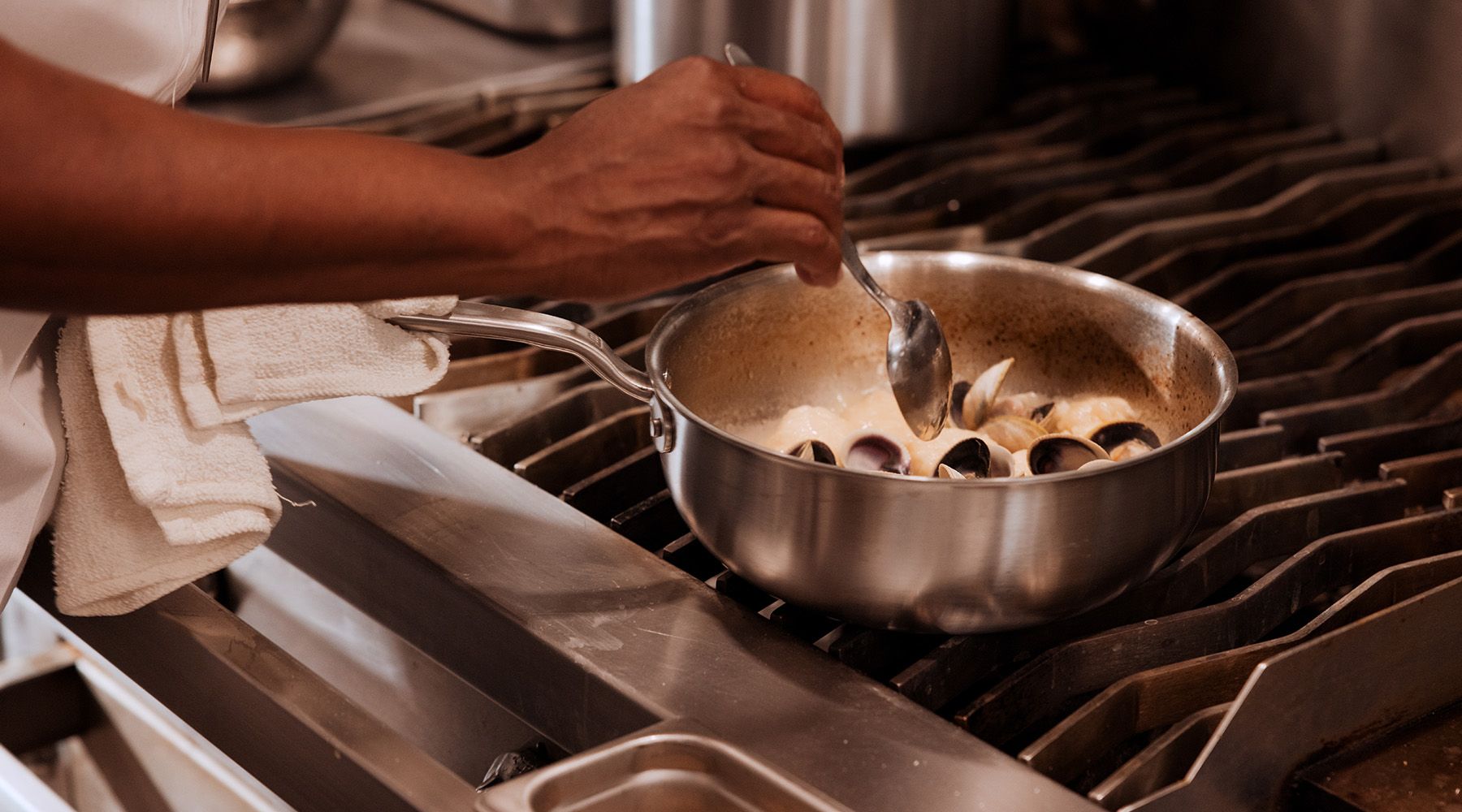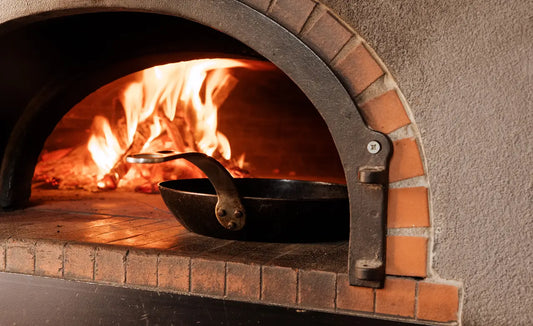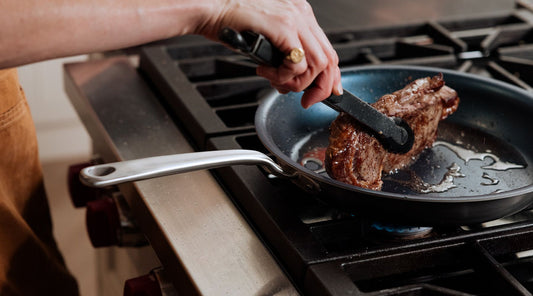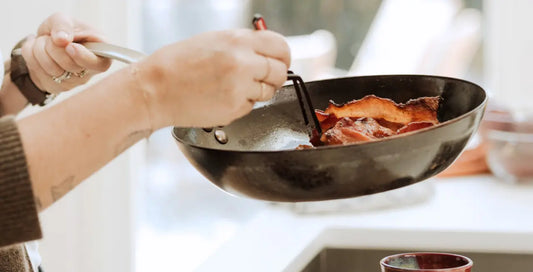Stainless steel is a versatile, well-loved material that makes up the main component of our Award-Winning Stainless Clad Cookware. It's extremely durable—a large reason why it's so beloved in professional kitchens—but over time, you may notice the surface of your pot or pan isn't quite so smooth and shiny as it once was. In fact, you may notice it has small, pock-like marks on the surface versus a smooth, unblemished surface.
Here, we'll cover what this damage—also known as "pitting"—exactly is and how to prevent it from affecting your pans in the future.
What Is Pitting, Anyway?
Stainless steel cookware is covered by a layer of chromium oxide, which prevents the metal from rusting. "Pitting" refers to damage sustained to the surface caused by chlorine and chloride found in salt.
When these elements come into contact with your cookware, it causes the protective layer of chromium oxide to begin to break down. Pitting will usually appear as small, dull-looking dots, and once it begins, it can spread around the surface of your cookware.
What Causes Pitting?

The most common culprit of pitting is sodium chloride, which is an element found in cooking salt. If you add salt to your water before it’s boiling, some of the salt will settle to the bottom of the pan, which can cause pitting.
Additionally, sodium hypochlorite, the active ingredient in bleach, also leads to pitting.
How to Prevent Pitting

The bad news is that once pitting starts, it cannot be reversed or removed. The good news is that pitting does not affect the performance of your cookware, and that there are a few steps you can take to prevent pitting from starting (or spreading).
1. Wait to Salt Water
The best way to prevent pitting is to only add salt to water once it's already come to a boil. That way, the salt dissolves in the hot water and does not sink down to the pan’s surface, thus preventing the reaction from occurring.
2. Let Pans Heat Up
This also goes for salting food in a cold pan. Make sure both your pan and the ingredients inside are hot, so that the salt melts on contact. If you're finishing your dish with salt, flaky or otherwise, do so once it's plated—not in the pan.
3. Avoid Abrasive Cleaners
Never use straight bleach or abrasive cleaners that contain bleach to clean your Stainless Clad Cookware. Instead, use dish soap or powdered cleaners like our Make It Like New Cleaner or Bar Keeper's Friend.
Additional Stainless Cookware Care Tips
Stainless Clad Cookware is easy to maintain if you follow these steps, also found in our detailed care instructions.
- As we mentioned above, avoid abrasive cleaners and harsh brushes that may cause deep scratches in the surface of your cookware. This includes bleach-based cleaners, steel wool and oven cleaner.
- Dry your pans right after washing them, as letting water droplets sit can lead to chalky, white spots called calcium deposits. These can either be removed with our Stainless Steel Cleaner or by bringing a mixture of 1 part vinegar to 3 parts water to a boil in your cookware. Let that cool before pouring it out, rinsing once more with water, and drying immediately.
- Though Stainless Clad Cookware can take the heat, this can lead to discoloration and burnt food. Both can be removed by either a vinegar wash or making a paste with our Stainless Steel Cleaner. (Pro tip: soaking your cookware in hot water before cleaning will reduce the amount of elbow grease needed.)
Ready to Cook?
Keeping your Stainless Clad Cookware in good condition doesn’t have to be a challenge. As with all of our cookware, with some knowledge and care, you can avoid common mistakes and preserve the integrity of your pots and pans so that they last a lifetime.

